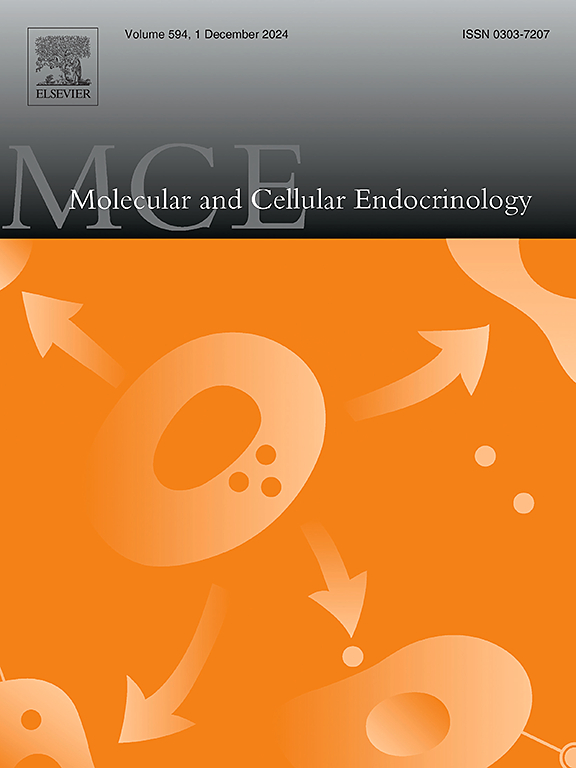双酚a诱导的癌症相关脂肪细胞通过CXCL12/AKT信号通路促进乳腺癌发生。
IF 3.8
3区 医学
Q2 CELL BIOLOGY
引用次数: 0
摘要
双酚A (BPA)是一种常用的塑料添加剂,被认为会导致肥胖。BPA作为一种环境内分泌干扰物,与BC的发生和发展密切相关。然而,BPA促进乳腺癌的分子机制尚不清楚。由于肥胖是乳腺癌的重要危险因素,本研究旨在探讨BPA是否通过诱导肥胖促进乳腺癌的发展。根据美国国家健康与营养调查数据,在体重指数≥30的美国成年人中,BPA暴露与性别特异性癌症风险呈正相关,表明肥胖可能受到尿液BPA的影响。3T3-L1细胞在10-8 M双酚a处理后分化为成熟脂肪细胞,随后用4T1培养基处理获得与癌症相关脂肪细胞(CAAs)相关的特性。网络药理学提示CXCL12可能是乳腺癌进展的关键靶基因。后续PCR分析显示,在bpa诱导的CAAs中,CXCL12表达较高。过表达CXCL12通过激活AKT通路促进上皮-间质转化(EMT)和4T1细胞迁移。在体内,与仅移植4T1细胞的对照相比,bpa诱导的CAAs加速了肿瘤的生长。在BPA-CAAs组组织中,CXCL12、CAAs相关标志物、磷酸化AKT、N-cadherin和vimentin的表达显著升高,而E-cadherin的表达降低。综上所述,BPA可能通过CXCL12/AKT通路诱导脂肪细胞向caa样细胞分化,进而促进乳腺癌EMT。本文章由计算机程序翻译,如有差异,请以英文原文为准。

Bisphenol A-induced cancer-associated adipocytes promotes breast carcinogenesis via CXCL12/AKT signaling
Bisphenol A (BPA), a commonly used plastic additive, is believed to cause obesity. As an environmental endocrine disruptor, BPA is closely associated with the onset and progression of BC. However, the molecular mechanisms underlying the promotion of breast cancer by BPA remain unclear. As obesity is a significant risk factor for breast cancer, this study aimed at exploring whether BPA facilitates the progression of breast cancer by inducing obesity. Using the National Health and Nutrition Examination Survey data, a positive correlation was observed between BPA exposure and the risk of sex-specific cancers among US adults with body mass index ≥30, suggesting that obesity may be influenced by urinary BPA. 3T3-L1 cells differentiated into mature adipocytes following treatment with 10−8 M BPA, and subsequent treatment with 4T1-conditioned medium acquired properties associated with cancer-associated adipocytes (CAAs). Network pharmacology suggested that CXCL12 may serve as a key target gene in breast cancer progression. Follow-up PCR analysis revealed high CXCL12 expression in BPA-induced CAAs. Overexpression of CXCL12 promoted epithelial-mesenchymal transition (EMT) and 4T1 cell migration by activating the AKT pathway. In vivo, BPA-induced CAAs accelerated tumor growth compared to a controls xenografted with only 4T1 cells. In tissues from the BPA-CAAs group, the expression of CXCL12, markers associated with CAAs, phosphorylated AKT, N-cadherin, and vimentin was markedly elevated, whereas the expression of E-cadherin was reduced. In conclusion, BPA may induce adipose cells to differentiate into CAA-like cells and subsequently advance breast cancer EMT through the CXCL12/AKT pathway.
求助全文
通过发布文献求助,成功后即可免费获取论文全文。
去求助
来源期刊

Molecular and Cellular Endocrinology
医学-内分泌学与代谢
CiteScore
9.00
自引率
2.40%
发文量
174
审稿时长
42 days
期刊介绍:
Molecular and Cellular Endocrinology was established in 1974 to meet the demand for integrated publication on all aspects related to the genetic and biochemical effects, synthesis and secretions of extracellular signals (hormones, neurotransmitters, etc.) and to the understanding of cellular regulatory mechanisms involved in hormonal control.
 求助内容:
求助内容: 应助结果提醒方式:
应助结果提醒方式:


